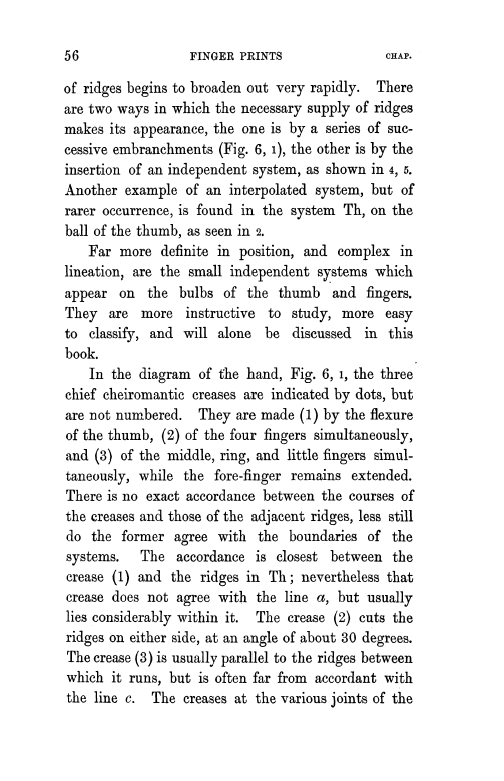| ||||||

OCR Rendition - approximate
5 6 FINGER PRINTS CHAP. of ridges begins to broaden out very rapidly. There are two ways in which the necessary supply of ridges makes its appearance, the one is by a series of successive embranchments (Fig. 6, 1), the other is by the insertion of an independent system, as shown in 4, 5. Another example of an interpolated system., but of rarer occurrence, is found in the system Th, on the ball of the thumb, as seen in 2. Far more definite in position, and complex in lineation, are the small independent systems which appear on the bulbs of the thumb and fingers. They are more instructive to study, more easy to classify, and will alone be discussed in this book. In the diagram of the hand, Fig. 6, 1, the three chief cheiromantic creases are indicated by dots, but are not numbered. They are made (1) by the flexure of the thumb, (2) of the four fingers simultaneously, and (3) of the middle, ring, and little fingers simultaneously, while the fore-finger remains extended. There is no exact accordance between the courses of the creases and those of the adjacent ridges, less still do the former agree with the boundaries of the systems. The accordance is closest between the crease (1) and the ridges in Th ; nevertheless that crease does not agree with the line a, but usually lies considerably within it. The crease (2) cuts the ridges on either side, at an angle of about 30 degrees. The crease (3) is usually parallel to the ridges between which it runs, but is often far from accordant with the line c. The creases at the various joints of the
|